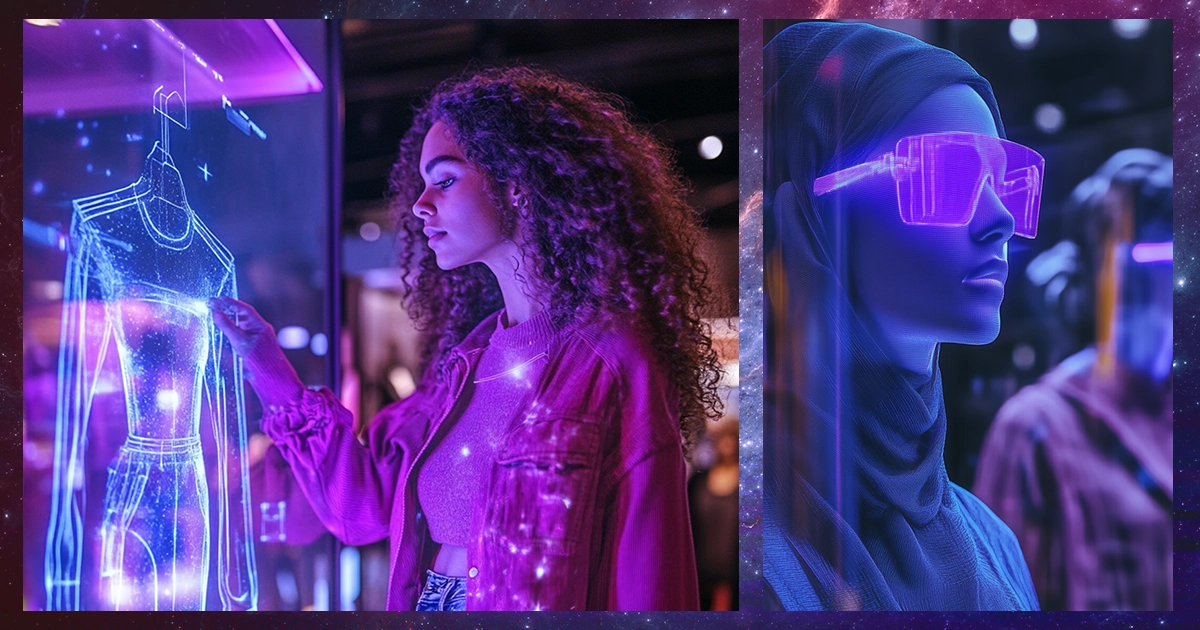
How IKEA’s ‘Place' is Transforming Retail through Augmented Reality
share

Summary
The article explores how IKEA’s “Place” app is transforming retail by using augmented reality (AR) to merge the physical and digital shopping experience. By allowing customers to visualize furniture in their own homes, the app boosts confidence, lowers returns, and makes shopping more engaging. Beyond visualization, IKEA leverages AR for community-building, sustainability, and data-driven insights, setting a benchmark for the future of immersive retail experiences.
Table of Contents:
Redefining Retail: IKEA's Innovative Use of AR
Connecting the Dots: Merging Physical and Digital
Building Community Through Social Features
Highlighting Sustainability and Ethical Shopping
Harnessing Data for Ongoing Enhancement
Major brands are increasingly tapping into augmented reality (AR) and virtual reality (VR) to enhance customer interactions and reshape the shopping experience. These cutting-edge technologies allow consumers to engage with products in ways that were once considered impossible, enabling them to visualize items in their own spaces, virtually try on clothing, or even navigate entire digital stores. This shift towards experiential retail not only boosts engagement but also cultivates stronger relationships between brands and their audiences.
Leading this innovative wave is IKEA, the globally recognized authority in home furnishings. With its groundbreaking "IKEA Place" app, the company has adopted AR to fundamentally change how consumers shop for furniture. By letting users position virtual IKEA products directly within their homes, the app tackles a major challenge in online shopping: the struggle to envision how a piece of furniture will fit and appear in a specific environment.
As shoppers make decisions with this newfound assurance, the app enriches the overall shopping experience, making it more interactive and tailored. The incorporation of AR not only simplifies the decision-making process but also injects an element of enjoyment, transforming a usually mundane task into an engaging endeavor.
In this article, we will examine how IKEA's application of augmented reality through "IKEA Place" is establishing a new paradigm for retail, demonstrating the potential of immersive technology to craft unforgettable shopping experiences. By merging the digital with the physical, IKEA is not just offering furniture; it is creating a customer-focused journey that resonates with today’s digitally savvy consumers.
Redefining Retail: IKEA's Innovative Use of Augmented Reality
IKEA's savvy integration of augmented reality (AR) through the "IKEA Place" app is reshaping the retail landscape and setting a new standard for consumer engagement. By enabling customers to visualize furniture in their own homes, IKEA is not merely selling products; it is fostering an immersive shopping experience that addresses essential consumer challenges. This strategy is particularly crucial in the home furnishings market, where the inability to physically inspect items can create hesitation and doubt.
The "IKEA Place" app allows users to interact with a diverse selection of furniture pieces, placing them in real-world contexts to evaluate fit, aesthetics, and practicality. This functionality transforms shopping from a transactional activity into a creative and enjoyable process. Customers can explore various layouts and styles, instilling a sense of ownership and personalization that conventional shopping often lacks.
Additionally, IKEA's application of AR boosts consumer confidence, leading to increased conversion rates and lower return rates. When shoppers can visualize how a product will integrate into their space, they are more likely to feel satisfied with their selections, resulting in a more seamless purchasing experience. This not only advantages customers but also enhances IKEA's profitability.
The app’s social sharing features further amplify its effectiveness. Users can effortlessly share their virtual designs with friends and family, sparking organic discussions about the brand and promoting community interaction. This social element not only enriches the customer journey but also generates valuable word-of-mouth marketing, increasing brand visibility and loyalty.
By prioritizing AR technology, IKEA is not just keeping up with industry trends; it is at the forefront of retail innovation. This strategic focus not only enhances the customer experience but also positions IKEA as a forward-thinking brand committed to fulfilling the evolving demands of its consumers in an increasingly digital world.
Connecting the Dots: Merging Physical and Digital Shopping Experiences

IKEA's "IKEA Place" app successfully merges the physical and digital shopping realms, creating a harmonious integration that enhances the consumer experience. As traditional retail spaces encounter challenges in attracting customers, the ability to combine in-store elements with digital ease has become essential. The app functions as a virtual showroom, enabling customers to browse and engage with IKEA’s wide product selection from the comfort of their homes.
A significant benefit of this hybrid model is that it empowers shoppers to make well-informed choices without the typical pressure and constraints found in physical stores. Customers can leisurely visualize how different items will complement their existing decor, try out various layouts, and ensure their selections align with their personal preferences and functional requirements. This capability transforms the buying process into a more thoughtful and enjoyable journey.
Moreover, the app encourages users to visit physical IKEA stores for final purchases and pickups, driving foot traffic back into retail locations. Once customers have identified their desired products through the app, they may opt to see them in person before making final decisions. This not only boosts customer satisfaction but also allows IKEA to effectively utilize its physical presence, creating a seamless omnichannel experience.
Additionally, the app’s instant access to product details, dimensions, and pricing enriches the shopping experience. Shoppers can gather all necessary information without feeling rushed or overwhelmed, enabling them to concentrate on what truly matters—their unique vision for their space.
Similarly, Sentient By Elysian (SBE) is harnessing augmented and virtual reality to enhance user experiences within the luxury retail sector. By providing virtual showrooms and interactive displays, SBE is redefining how luxury brands connect with customers. These immersive technologies allow shoppers to engage with products in a dynamic way, fostering deeper emotional connections and brand loyalty. As consumers explore high-end items in vibrant, virtual settings, they are not merely making purchases; they are participating in a captivating experience that resonates with their aspirations.
Building Community Through Social Features
The "IKEA Place" app does more than enhance individual shopping experiences; it actively promotes community engagement through its social integration capabilities. In a time when consumers increasingly seek connection and shared experiences, the app allows users to share their augmented reality designs with friends and family, creating a collaborative atmosphere that enriches the overall consumer journey.
This social component encourages users to involve their loved ones in the decision-making process, allowing them to receive feedback and suggestions on their furniture selections. By sharing virtual room designs, customers can engage in discussions about style preferences, practical needs, and aesthetic values, making the shopping experience more interactive and enjoyable. This communal approach not only helps customers feel more supported in their choices but also strengthens their emotional connection to the IKEA brand.
Furthermore, the ability to showcase personalized designs on social media platforms boosts brand visibility and generates organic interest. As users share their AR experiences, they engage in a form of authentic word-of-mouth marketing that can have a significant impact. Friends and family who see these shared designs are likely to be inspired to explore the app themselves, expanding IKEA’s reach and attracting new customers.
IKEA's dedication to fostering community extends to its marketing efforts as well. By encouraging users to share their experiences, the brand cultivates a sense of belonging and connection that transcends transactional relationships. Customers feel like part of a larger community of IKEA enthusiasts, which enhances brand loyalty and promotes repeat business.
In this way, "IKEA Place" exemplifies how modern retail can leverage technology to create not just a shopping tool but a platform for community interaction and shared experiences. By prioritizing social integration, IKEA is not only enhancing consumer engagement but also building a vibrant community that celebrates the joy of home design.
Highlighting Sustainability and Ethical Shopping

The "IKEA Place" app serves not only as a visualization tool for furniture but also reflects the brand's commitment to sustainability and ethical consumerism. As consumers become increasingly aware of the environmental impact of their purchases, the app empowers them to make informed choices about the products they bring into their homes.
Through features that spotlight eco-friendly furniture options and sustainable materials, the app encourages users to consider the lifecycle of their purchases. For instance, customers can explore products made from renewable resources or those that adhere to strict environmental standards. This focus on sustainability enhances the user's shopping experience while aligning with IKEA’s broader mission to promote responsible consumption.
By incorporating sustainability into the buying process, IKEA fosters a sense of responsibility among its customers. Shoppers are more likely to feel positive about their choices when they know they are contributing to a healthier planet. This dual emphasis on innovative technology and ethical practices positions IKEA as a leader in the retail industry, appealing to a growing demographic of environmentally conscious consumers who prioritize sustainability in their purchasing decisions.
Harnessing Data for Ongoing Enhancement
The integration of augmented reality in IKEA's retail strategy provides the brand with the ability to collect and analyze valuable data on consumer preferences and behavior. By observing how users interact with the "IKEA Place" app—such as which products are viewed most often and the duration of time spent experimenting with various layouts—IKEA can obtain essential insights into current market trends and customer needs.
This data-centric approach extends beyond basic analytics; it informs product development, marketing tactics, and inventory management. For example, if data indicates a particular style of furniture is rising in popularity, IKEA can respond by ramping up production or designing complementary items. Additionally, understanding user interactions can help refine the app experience, making it more intuitive and user-friendly, thereby enhancing overall customer satisfaction.
Furthermore, these insights empower IKEA to remain agile in a fast-evolving retail environment. By continually adjusting to consumer feedback and preferences, the brand can cultivate stronger relationships with its customers, promoting loyalty and encouraging repeat purchases. In this manner, the strategic application of data not only improves the shopping experience but also reinforces IKEA's status as an innovative retailer dedicated to meeting the dynamic needs of its audience.
In Brief
The integration of augmented reality and immersive technologies is transforming the retail sector, providing brands with innovative methods to enhance customer experiences and forge deeper connections. "IKEA Place" embodies this shift by enabling consumers to visualize products in their own environments, allowing them to make informed choices while enjoying the shopping experience. This seamless fusion of digital and physical interactions not only boosts customer satisfaction but also strengthens brand loyalty in a competitive marketplace.
Inspired by such innovations, companies like Sentient By Elysian (SBE) are adopting similar strategies, utilizing AR and VR to create captivating virtual showrooms that resonate with luxury consumers. These forward-thinking approaches emphasize the importance of connecting with customers on an emotional level, transforming shopping into an immersive experience.
As brands continue to embrace these technological advancements, the future of retail will be characterized by the effective merging of physical and digital experiences. By prioritizing consumer needs and leveraging cutting-edge tools, retailers can thrive in the evolving landscape, ensuring they remain relevant and appealing to today’s tech-savvy shoppers. Ultimately, this strategic integration will lead to a more engaging, sustainable, and customer-focused shopping experience.
Website | LinkedIn | Instagram | YouTube | Facebook

























